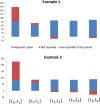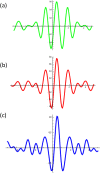True epidemic growth construction through harmonic analysis
- PMID: 32173304
- PMCID: PMC7118632
- DOI: 10.1016/j.jtbi.2020.110243
True epidemic growth construction through harmonic analysis
Abstract
In this paper, we have proposed a two-phase procedure (combining discrete graphs and wavelets) for constructing true epidemic growth. In the first phase, a graph-theory-based approach was developed to update partial data available and in the second phase, we used this partial data to generate plausible complete data through wavelets. We have provided two numerical examples. This procedure is novel and implementable and adaptable to machine learning modeling framework.
Keywords: Convergence of graphs; Partial to complete data; Wavelets.
Copyright © 2020 Elsevier Ltd. All rights reserved.
Conflict of interest statement
Declaration of Competing Interest None.
Figures











References
-
- Anderson R.M., May R.M. Oxford Univ. Press; Oxford: 1991. Infectious Diseases of Humans: Dynamics and Control.
-
- Bartlett M.S. Proceedings of the Third Berkeley Symposium on Mathematical Statistics and Probability, Volume 4: Contributions to Biology and Problems of Health, 81–109, 1956. University of California Press; Berkeley, Calif: 1956. Deterministic and tochastic odels for ecurrent pidemics.
-
- Bartlett M.S. Measles periodicity and community size. J. R. Stat. Soc. A. 1957;120(1957):48–70.
-
- Bauch C.T. Vol. 1945. Springer Verlag; 2008. The role of mathematical models in explaining recurrent outbreaks of infectious childhood diseases’. in: ‘mathematical epidemiology. (Lecture Notes in Mathematics, Mathematical Biosciences Subseries).
MeSH terms
LinkOut - more resources
Full Text Sources

